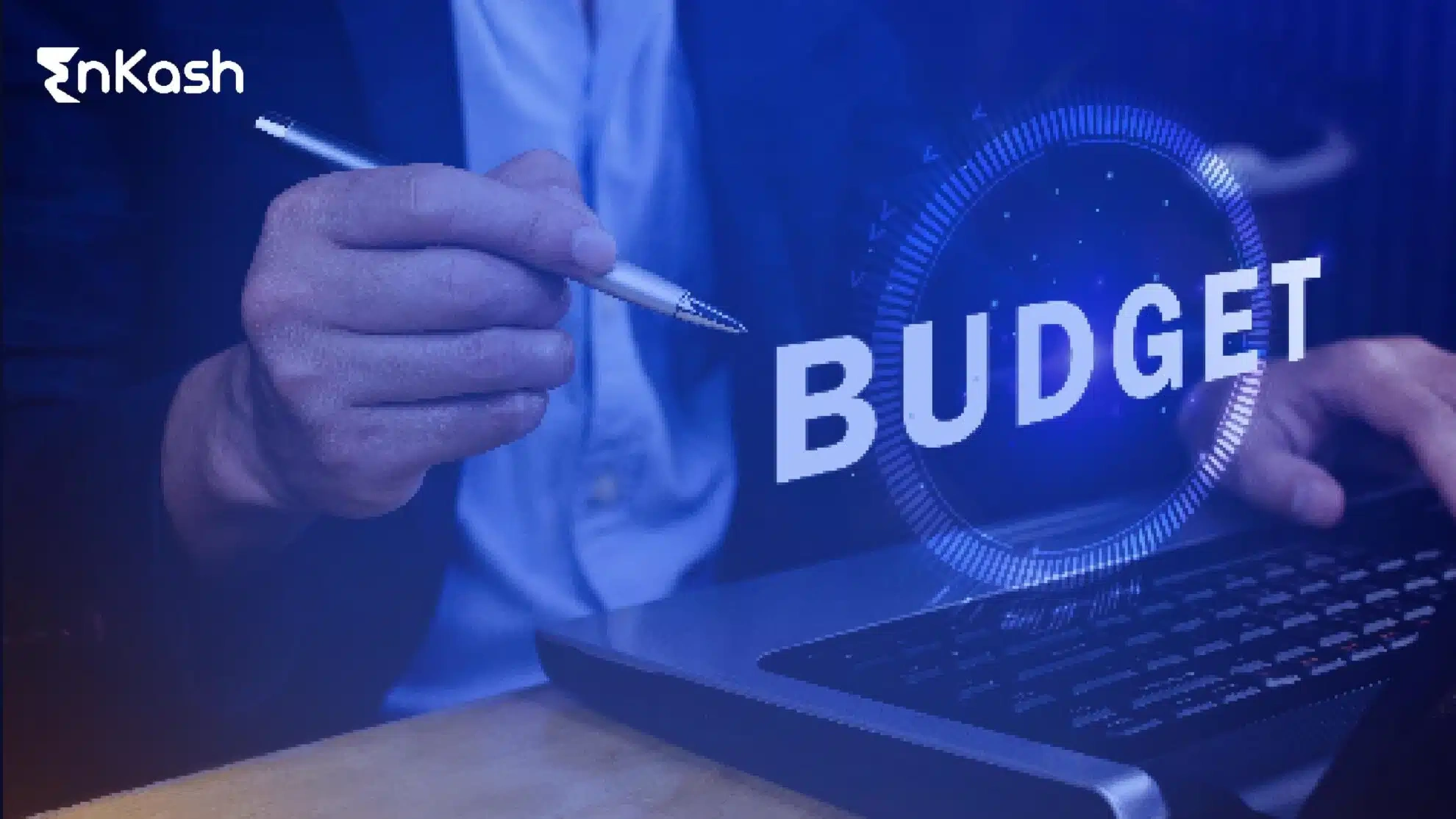Budgeting and forecasting are highly effective financial management tools used by all organizations to provide the framework for financial planning, decision-making, and resource management processes. Budgeting is defined as a structured financial plan showing expected income and expenses. On the other hand, forecasting can be a flexible assessment of an organization’s current financial position based on developments in the market. The distinction between budgeting and forecasting helps organizations make better decisions, ensure efficient management of cash flows, and align operational goals with financial realities.
What is Budgeting and Forecasting?
Budgeting and forecasting are both important tools for planning finances in the company. Budgeting and forecasting help business firms to fix a target of finance, control and monitor the resources as well as for decision-making. Budgeting is like a road map that tells you where and how much you are going to spend and how much you will receive. Meanwhile, forecasting is like a crystal ball that tells you how much you will receive in the future and how much you will spend in the future. Although they are used primarily for decision-making, they have different structures, approaches, and periods.
What is Budgeting?
A budget is a detailed plan of forecasted revenues, expenses, and cash flow management over a fiscal year. It is a conceptual roadmap of how a company would spend money, keep its costs at a minimum, and land on its desired financial outcome. The budget is set at the beginning of the year and sticks until there is a major shift in business operations. Budgeted allocations are used to check your weight against a scale. At the most basic level, when a company draws up a budget, it is a way to plan for the future, avoid overspending, and measure its strategies.
Also Read: Budget Management Platform
What is Forecasting?
Forecasting involves predicting future business outcomes by analyzing past financial data, current financial status, and anticipated achievements. Unlike budgets, forecasts are ongoing to align with present realities, offering real-time insights. Businesses use forecasts to swiftly adjust strategies in response to market variations, demand changes, or cost adjustments. Budgets set rigid goals, while forecasts provide agility by adjusting projections based on actual results.
Why are Budgeting and Forecasting Both Important?
Budgeting and forecasting work together. Budgeting provides a long-term financial roadmap, while forecasting is real-time and updates according to current trends. With budgeting and forecasting combined, companies can achieve financial stability through efficiently using resources. Budgeting gives a framework for budgeting resources; forecasting makes it a bit more adaptive by generating continuous projections to support in-between-year decisions. Both of these operations are crucial for financial discipline and responding to market shifts.
Types of Budgeting and Forecasting
Businesses use several types of budgeting and forecasting to manage finances effectively. Each type serves different needs, depending on the organization’s size, goals, and complexity. Choosing the right approach can significantly impact how well a business plans for its financial future and responds to changes in the market.
Types of Budgeting
Different types of budgeting include incremental budgeting, zero-based budgeting, activity-based budgeting, and rolling budgeting. Each differs in the budgeting process it follows.
Zero-Based Budgeting (ZBB)
Zero-based budgeting suggests creating a budget from scratch for every year. Unlike incremental budgeting, where the previous budget is carried over, zero-based budgeting starts from scratch. Departments must build their budget, justifying each item based on necessity and expected return. This method encourages cost efficiency but can be time-consuming due to the level of detail required.
Activity-Based Budgeting (ABB)
Activity-based budgeting focuses on the costs of the specific activities that drive business processes. ABB assigns costs to activities, helping companies understand the expenses tied to specific projects or operations instead of looking at overall department costs. It allows businesses to focus on the drivers of costs and optimize resource allocation.
Incremental Budgeting
In incremental budgeting, the previous year’s budget is used as a base, and adjustments are made for the upcoming period. It includes adjustments, increases, or decreases in revenue or employee expenses based on anticipated growth or changes. Incremental budgeting is simple and easy to implement but may overlook inefficiencies or opportunities for cost reduction.
Also Read: Expense Management Software
Rolling Budgeting
Rolling budgeting is a continuous process where budgets are updated regularly, mostly every quarter. It allows companies to adjust their financial plans based on recent performance and changes in the business environment. It also offers flexibility and ensures that the budget remains relevant throughout the year.
Types of Forecasting
There are four types of forecasting: qualitative forecasting, quantitative forecasting, causal forecasting, and demand forecasting. Each has a different purpose. Let’s understand all the forecasting types in detail.
Quantitative Forecasting
Quantitative forecasting is based on historical data and statistical models to predict future financial outcomes. The techniques used in this type of forecasting are time series analysis, regression analysis, and trend projection. This approach is data-driven and often more accurate than qualitative forecasting as it helps businesses identify patterns and make data-backed decisions.
Qualitative Forecasting
Qualitative forecasting relies on expert judgment, intuition, and market research to predict future financial performance. It is often used when historical data is unavailable or unreliable, such as when launching a new product or entering a new market. Qualitative Forecasting can provide insights into market trends and customer behaviour, but it may be less precise than quantitative methods.
Demand Forecasting
Demand forecasting focuses on predicting customer demand for a product or service. This is done by analyzing past sales data, market trends, and customer behavior. Accurate demand forecasting helps businesses optimize inventory levels, manage production, and avoid overstocking or understocking.
Causal Forecasting
Causal forecasting examines the relationships between different variables to predict financial outcomes. For example, a company might use causal forecasting to analyze how external factors such as economic growth, inflation rates, or customer behavior impact sales. This method helps businesses understand how external influences affect their financial performance and adjust strategies accordingly.
Key Differences Between Budgeting and Forecasting
While budgeting and forecasting are complementary to each other in financial planning, they serve different purposes and are used in distinct ways. Understanding the key differences between budgeting and forecasting is essential for making effective financial decisions and earning profits based on real-time market trends.
The budgeting and forecasting differences are as follows:
Particulars |
Budgeting |
Forecasting |
Time Frame |
|
|
Type |
|
|
Purpose |
|
|
Usage |
|
|
Term of the Plan |
|
|
How Budgeting and Forecasting Support Strategic Business Decisions
Budgeting and forecasting help you make important strategic business decisions because they tell you where you’ve been, where you’re going, and how much it’s going to cost you to get there. These two processes together allow you to develop a complete financial blueprint, from which you can build a highly effective strategic business plan. Here’s how:
Risk Management
Budgeting and forecasting help companies plan for potential financial problems and to plan contingencies in case they arise. Forecasts let companies model various eventualities, e.g., what happens to our results if a downturn in the market forces us to cut prices or if our costs increase? Using updated budgets and forecasts, companies can plan for the worst while hoping for the best. They can cut costs, find new investments, and insure or hedge against risk, and so remain nimble and in good financial shape in the event of an unforeseen problem.
Resource Allocation
Budgeting and forecasting are strategic processes that help management set a course for resource allocation, whether that’s for day-to-day expenditure, marketing spending, or investment in growth. The budget shows where the pot of money should go. The forecast, meanwhile, provides a live picture of how those allocations are holding up. Suppose a forecast suggests that money’s not coming in as forecast at a certain point in the financial year or that business expenses are rising. In that case, management can adjust the allocation of resources to stay on course for the company’s long-term goals.
Also Read: Difference between Expense and Expenditure
Informed Decision-Making
Figuring out what to do and how to do it is crucial to your business growth. Using budgets and forecasts, you can determine the answers to some key financial questions: can you afford that new product that will help expand into new markets, or can you afford to do it? Is it better to invest in a new piece of manufacturing equipment with the cash you have on hand, or should you borrow more funds to expand your production line? Do you have the liquidity to make a strategic acquisition that would solidify your market position? Knowing exactly where you are and where you are headed with your budgeting and forecasting in hand will help you carefully weigh the pros and cons of any strategic move you are considering.
Aligning with Business Goals
Budgeting and forecasting help us balance tomorrow’s aspirations and today’s results. Budgets provide a set of clear guidelines and support that enables each department and team to navigate together, all moving toward the same goals. Forecasting, real-time data, and adjustments keep us on course by updating us on whether or not we are on target with our financial objectives.
Challenges in Budgeting and Forecasting
Organizations need help in implementing and maintaining budgeting and forecasting processes. This passage talks about the main challenges in budgeting and forecasting processes:
Forecasting Uncertainty
Forecasting can be tricky as it involves predicting future market trends, the behavior of customers, and the general economic environment can be influenced by external factors, such as – shifts in regulations, economic downturns, or issues with the supply chain.
Businesses will have to keep updating forecasts as the world changes, but there will always be some risk that the forecasts are not accurate. Furthermore, forecasting that is biased toward using past data can lead to overly positive predictions, particularly if market conditions change suddenly. Businesses may find it difficult to plan for what lies ahead.
Data Accuracy and Availability
Another significant challenge is the accuracy of the data being used as the basis for budgeting and forecasting. If the data is incorrect, the budgets and forecasts will be incorrect, which will ultimately lead to poor decision-making. For instance, if the revenue figures are too high or the expense data is missing some line items, the entire financial plan could be deemed unusable.
Companies also struggle with access to real-time data, especially if data collection is manual. Without the right software to aggregate and analyze data, these manual processes increase the chance of errors.
Resource Constraints
Budgeting and forecasting is a lengthy and resource-intensive process, particularly for large, complex organizations or business units with many different activities and financial transactions. Many small or under-resourced businesses or organizations will not have the time or manpower to develop detailed budgets or to update those forecasts on a regular basis. Zero-based budgeting requires justifying each and every line item, which is a time-consuming and resource-intensive process.
Even the largest organizations may struggle to devote sufficient resources to ensuring that budgeting and forecasting processes are sufficiently robust, accurate and up-to-date.
Technological Limitations
While technology can support such processes greatly, many companies are still using spreadsheets or antiquated systems that do not support budgets and forecasting processes well, or at least not in an efficient way. Companies can’t view the same data collected from different departments without modern financial planning tools. Therefore, they can’t create budgets and forecasts that are timely and accurate.
Specialized financial software can be used to automate data collection, facilitate the budgeting process and provide real-time forecasting, but systems such as these take time and money to implement. Organizations that don’t adopt technology will suffer greater inefficiencies and inaccuracies in the financial planning process.
Departmental Silos
One of the most common issues associated with budgeting and forecasting is a lack of coordination across departmental boundaries. In many companies, departments develop their own budgets or forecasts in isolation from each other. One department’s plans might not be aligned with the company’s financial goals.
Cross-departmental collaboration helps departments build holistic budgets and forecasts that align with the company’s big-picture strategy.
A platform like EnKash helps companies manage their budgeting requirements efficiently, track real-time expenses, and enable advance management through automation. It allows for setting customized budgets aligned with departmental goals. The platform also ensures transparency and prevents overspending.
With easier processes of advance disbursement and integration of different categories, EnKash streamlines financial management, providing insights, and offers control for better forecasting. This comprehensive solution enhances better opportunities for financial planning and makes the decision-making process more accurate.
Read More: Budget Management Platform
Conclusion
Budgeting and forecasting are two financial planning tools that are an integral part of any business activity. The primary objective of using these tools is to strike a fine balance between the company’s resources, its finances and its market competitiveness.
Budgeting is a careful, predetermined plan that envisages the future financial position of the company on the basis of anticipated revenues and expenditures. On the other hand, forecasting is the ability of a business to quickly respond to changes in the market by constantly re-evaluating its current performance and formulating future projections.
The two processes differ in their functions. Budgets are geared toward fixed monetary targets, whereas forecasts allow for greater flexibility in adapting to unexpected events or market shifts.
Despite the numerous benefits, businesses face various challenges in implementing effective budgeting and forecasting processes, such as data accuracy, forecasting uncertainty, and resource constraints. Businesses can tackle these challenges by using the best strategies, technology, and teamwork across departments to craft financial plans that are precise and easy to act upon.
FAQs
How does budgeting help with cash flow management?
Budgeting can help businesses make wise financial decisions by reducing overspending, making sure daily operations are sufficiently funded, and effectively allocating resources. It can also show the company where its financial peaks and troughs are and prepare the business for different financial situations.
Can a business operate without a formal budget?
Budgeting is used for long-term planning of a firm’s financial situation, whereas forecasting is used to track the current situation in real-time and to update the forecast accordingly. . Combined together, budgeting and forecasting allow a firm to achieve financial stability by efficiently allocating its resources. Budgeting establishes the framework for budgeting resources; and forecasting makes it a little more flexible because it generates continuous projections that make it easier to support decisions made between years. Both of these operations are necessary to exercise financial discipline and respond to market changes.
What role does technology play in improving the budgeting and forecasting process?
Technology also improves budgeting and forecasting through automatic data analysis and reporting. Present-day financial software provides greater precision in planning by matching real-time data, showing its trends, and offering chances for scenario planning. These tools improve the accuracy of a financial plan and save time.
How can rolling forecasts benefit a business compared to traditional forecasting?
Unlike traditional forecasts, where companies must wait to update their projections until the end of the year, rolling forecasts allow companies to revisit their forecasts on a regular basis which can vary depending on their company. Because of this rolling nature, businesses that use rolling forecasts have more flexibility to react to their changing environment, such as a shift in market trends, unexpected costs, or a new strategy to make more money. This flexibility makes rolling forecasts superior to traditional forecasts.
Why is zero-based budgeting more time-consuming compared to other budgeting methods?
Think of zero-based budgeting as a ‘fresh start’ at the beginning of a new budgeting period. Instead of starting with last year’s budget and making adjustments, this is literally ‘starting from scratch’ or a ‘zero baseline’. Despite its name, it is certainly neither quick nor easy! It is a detailed and thorough process that takes a great deal of time and effort. Given the detail and effort in every step of the process, it does take more time than other approaches to budgeting.
How do external factors like economic shifts impact budgeting and forecasting?
The two operations complement each other: in budgeting, the road map becomes long-term, while in forecasting, it is real-time and uses the latest trends. If budgeting and forecasting are combined, the company can be expected to gain financial stability because it can use resources efficiently. Budgeting can provide a framework for how the resources are budgeted; forecasting makes it somewhat more responsive by creating rolling forecasts, a continuous output of projections to help decisions in the in-between years. Both of these operations are necessary for financial discipline and for adapting to market shifts.
How does qualitative forecasting differ from quantitative forecasting?
Qualitative forecasting mainly differs from quantitative forecasting in the type of data it uses. Qualitative forecasting relies on expert opinions, insights, and subjective interpretations, often gathered through methods like focus groups or surveys. It is useful when there is little to no historical data available, such as for new products or markets. In contrast, quantitative forecasting uses numbers and statistical models to make predictions about future trends and is therefore objective and data-driven.
How does scenario planning improve the forecasting process?
In this case, your future in advance by looking at the available options and preparing for each of them. This keeps organizations nimble and ready to deal with whatever makes its way into their path. This is what scenario planning is. What changes when organizations tweak the factors – revenue growth, expenses, market trends, etc – in their projections? Organizations can plan for not just the future but for a range of different futures. In addition to this, there is also the benefit of mitigating the risk posed if you rely on just one forecast.
Can budgeting and forecasting be effectively managed without financial expertise?
Basic budgeting can be done without expert financial skills, but we need expert financial skills to do detailed budgets and forecasts. So, we need financial experts for complex business because expert financial skills are important for achieving complex business goals. You can use platform like EnKash for budgeting related to different departements and their expenses.
Can budgeting and forecasting improve a company’s long-term financial planning?
Budgeting and forecasting are complementary processes: budgeting is the long-term, forward-looking financial map; forecasting is short-term, real-time, and continuously adjusted in light of the current trends. By combining budgeting and forecasting, the company can achieve dynamic financial stability in its resource use: budgeting provides the general framework for budgeting resources; forecasting makes it a bit more adaptive by generating continuous projections for in-between-year decisions. Both operations are indispensable for achieving financial discipline and responding to the changing market.








